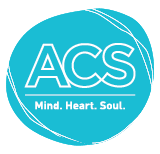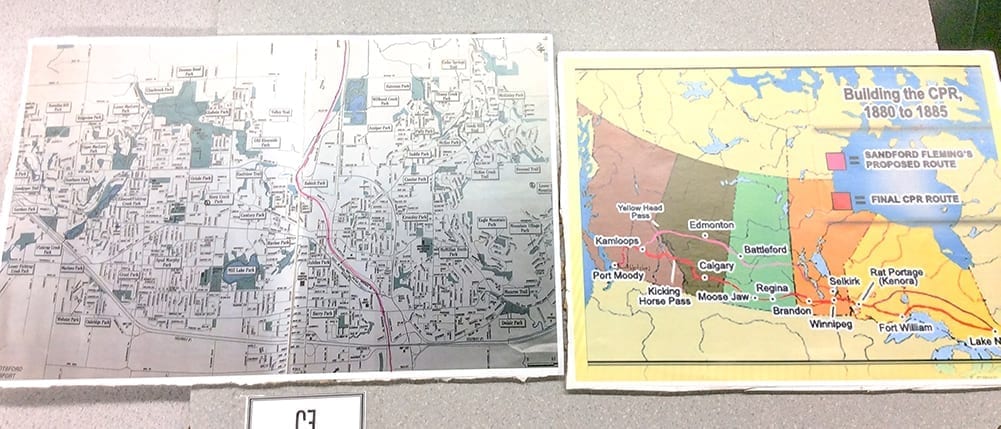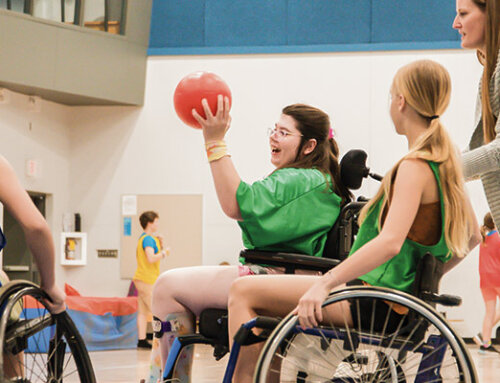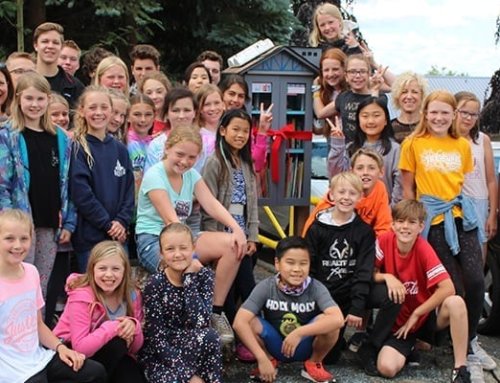DRIVING QUESTION:
How does our collective past shape our present experience?
Project Overview:
In our grade 8 Humanities curriculum we start the year by learning about “history” by studying bias, sources, approaches to historical study, etc. As we dig deeper into different eras of history throughout the year (Middle Ages, Renaissance, Reformation), we want students to have a foundation of knowledge and practice in various skills of historical study. In an attempt to bring history to life for students, this project introduces students to historical thought and skills by having them act as historians in their own community. By exploring the history of Abbotsford, students will be able to see very concretely how events in history have shaped both the past and present. Students will build empathy and explore the role of bias in history as they explore the stories of different people groups in the founding and development of this area.
Throughout this project, students will explore various museums and historical sites in an effort to experience history “in the field.” Students will also be challenged to think about their role in the community and how they can be involved in shaping the future of their city. Our grade 8 program incorporates a service component and this project will expose students to various areas of need in our community as options for them to pursue for their service component later in the year. This project is designed to emphasize inquiry. Students will be given freedom to consult various resources to answer their own questions. Active student collaboration is also emphasized in this project as students work together to ask questions, explore information, and draw conclusions. This project celebrates students as creative, capable, and active learners.
This project also seeks to expose students to competing worldviews in their community. Students will learn about the Sikh faith, foundational beliefs of First Nation’s peoples, and will evaluate their own beliefs. Students will also be challenged to look at the implications of beliefs. How do our beliefs shape how we live? In exploring the history of various people groups in our area, students will see clear connections between people’s beliefs and their actions. After having been introduced to the history of Abbotsford through various events and activities, students will choose to focus on a person, place, or event in Abbotsford history. The students’ goal is to communicate how events in the past have impacted and shaped the present. Students will be given voice and choice in choosing what to focus on for their project and how to communicate their learning.
“One of the biggest challenge of this project is managing the logistics of all of the field trips and coordinating with all of the experts in the field as well as managing busing, permissions slips, etc. Another challenge is to manage all of the freedom that students have in both topic and product choice. Although these are challenges, they are worth the work and effort required to support students in their learning. Next year, a change I’d like to make is to have all students share their learning at a local elementary school. My vision is to have each class matched up with three local elementary schools. Each class would then send 8-10 students to each school to present their learning in small groups to the students at each school. I believe that this will allow for another audience for student learning. I would also love to pursue having a ‘gallery’ or ‘museum’ of learning set up for an evening in a public venue such as the public library or the Reach. I am not sure if this is a feasible goal, but I’m going to pursue the option.”
Product/Presentation:
Students had significant voice and choice in their final product/presentation. Some students chose to make 3D models while others made interactive maps or brochures. Some students make tour guides for areas of Abbotsford. Some students created a presentation to share with Grade 5 students at Upper Sumas Elementary. Some students made videos. Others wrote articles or wrote and illustrated children’s story books. The variety of projects was really incredible to see.
How has this engaged students in ACS’ mission and vision?
Engaging Minds: Because this project is centered on local history, it is easy for students to be engaged and enthusiastic about their learning. Students encounter a lot of information from many different sources. They learn how to be good question askers and what it looks like to engage meaningfully in discussions, field trips, and research. The learning is very “real” for students as they get to discover the history of places they know and have visited.
Nurturing Hearts: This project challenges students to think about people in their communities. They will hear stories of persecution and immigration. They will see examples of injustice and prejudice. I hope they will be challenged to consider peoples’ stories.
Shaping God’s World: One of the main goals of this projects is to help students see the connections between the past and the present. They are exploring how events have consequences. We will engage in discussions about how decisions we make now will have a shaping impact on the future and students will be challenged to consider their role in shaping the world around them through their choices. Our potential audiences also play a role in allowing students to be shapers of God’s world. For example, by going to Upper Sumas Elementary school to share with the students there about the draining of Sumas Lake, students are helping foster greater understanding and empathy in the students there as they share about the complexities of the impact of the draining of the lake. This project not only allows our students to be shaped and challenged to consider their shaping impact in the world, but it also allows are students to shape others as they share their learning.
How has this learning experience served or connected to our community?
This project provided a lot of opportunities for students to connect with our broader community. They engaged with various individuals as we explored different areas of Abbotsford. For example, students connected with a local historian, Kris Foulds, who is the director of the Reach Gallery Museum and Historical Archives. Students interacted with city workers as we explored Barrowtown pump station. Another way that students made connections with our greater community is through their independent research. Some students contacted outside sources such as the Abby News and the new developers of the Atangard in downtown Abbotsford to further their learning. Another student interviewed Syrian refugees and compared their story to the Mennonite immigration story of fleeing persecution in Russia.
“This project allowed for so much student learning. Not only did students learn content about local history that has shaped their thinking and hopefully their interactions with others, but also students learned and practiced genuine skills of history. Students were historians. They asked questions, sought information, considered bias, drew conclusions, etc. Students also practiced many skills of project management such as planning ahead, setting mini-deadlines, using work time efficiently, solving problems that come up, etc. I am so excited to see how their learning and skill development through this project will influence their ability to act as historians throughout the year as we explore other eras of history.”















Leave A Comment